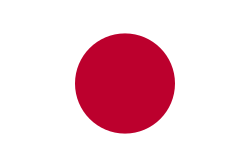Expedition 72
| Expedition 72 | |||
 | |||
| Uppdragsstatistik | |||
|---|---|---|---|
| Rymdstation: | ISS | ||
| Start: | 23 september 2024 | ||
| Antal besättningsmedlemmar: | 7-11 | ||
| Transport | |||
| Uppskjutning: | med | ||
| Uppskjutningsplats: | Kosmodromen i Bajkonur Kennedy Space Center | ||
| Landning: | med | ||
| Landningsplats: | Kazakstan Atlanten | ||
| Kronologi | |||
| |||

Expedition 72 är den 72:e expeditionen till Internationella rymdstationen (ISS). Expeditionen började den 23 september 2024 då delar av Expedition 71s besättning återvände till jorden med Sojuz MS-25.
Nick Hague och Aleksandr Gorbunov anlände till rymdstationen den 29 september 2024
I slutet av oktober 2024 kommer Matthew Dominick, Michael R. Barratt, Jeanette J. Epps och Alexander Grebenkin lämna rymdstationen.
I februari 2025 kommer Anne McClain, Nichole Ayers, Takuya Onishi och Kirill Peskov anlända till rymdstationen.
I februari 2025 kommer Sunita Williams, Barry E. Wilmore, Nick Hague och Aleksandr Gorbunov lämna rymdstationen.
I mars 2025 kommer Sergej Ryzjikov, Alexey Zubritsky och Jonny Kim anlända till rymdstationen.
Besättning
| Position | Första delen (23 - 29 september) | Andra delen (29 september - 23 oktober) | Tredje delen (23 oktober 2024 - ? mars 2025) | Fjärde delen (? - ?) | Femte delen (? - ?) | Sjätte delen (? - ? april 2025) |
|---|---|---|---|---|---|---|
| Befälhavare | Hennes tredje rymdfärd | |||||
| Flygingenjör | Hans tredje rymdfärd | |||||
| Flygingenjör | Hans andra rymdfärd | |||||
| Flygingenjör | Hans fjärde rymdfärd | |||||
| Flygingenjör | Hans första rymdfärd | Hennes andra rymdfärd | ||||
| Flygingenjör | Hans tredje rymdfärd | Hennes första rymdfärd | ||||
| Flygingenjör | Hennes första rymdfärd | Hans andra rymdfärd | ||||
| Flygingenjör | Hans första rymdfärd | Hans första rymdfärd | ||||
| Flygingenjör | Hans tredje rymdfärd | Hans tredje rymdfärd | ||||
| Flygingenjör | Hans andra rymdfärd | Hans första rymdfärd | ||||
| Flygingenjör | Hans första rymdfärd | Hans första rymdfärd | ||||
Externa länkar
| |||||||||||||||||||
Media som används på denna webbplats
Mission insignia for International Space Station (ISS) Expedition 72
- The official insignia of the Expedition 72 crew that will live and work aboard the International Space Station for a six-month space research mission beginning in late 2024. The simple patch design highlights the configuration of the orbital laboratory with its six roll-out solar arrays augmenting the station's power generation system.
The 11-member Expedition 72 crew poses for a portrait aboard the International Space Station's Harmony module.
Mission insignia for International Space Station (ISS) Expedition 71
- For nearly a quarter of a century the International Space Station (ISS) has hosted crews and accommodated science experiments even as it has continued to evolve into the highly capable orbiting laboratory of today. With its unique vantage point, the ISS serves as an intersection for discoveries ranging from the vast, such as the search for dark matter and cosmological origins, to the near, such as detailed observation of our home planet and its atmosphere, to the microscopic, including behavior of microbial life, DNA sequencing, and molecular biology in the microgravity environment.
- The Expedition 71 patch celebrates this science as well as the thousands of multinational scientists and technicians that have contributed to numerous groundbreaking experiments. The ISS is the ultimate destination for the scientifically curious.
- The symbology represents onboard research into quantum behavior of novel states of matter, antibodies and immune function, the search for dark matter, flame and combustion physics, DNA expression, plant growth and root behavior, and direct earth observation. The human eye and microscope objectives at upper left form the apex of a cone of vision culminating in the Expedition number 71, and represents the deliberate and disciplined practice of scientific observation.
- Earth’s moon and Mars are also depicted as next steps for exploration, with an anticipation of further rich scientific discovery using many techniques and skills honed aboard the ISS.





